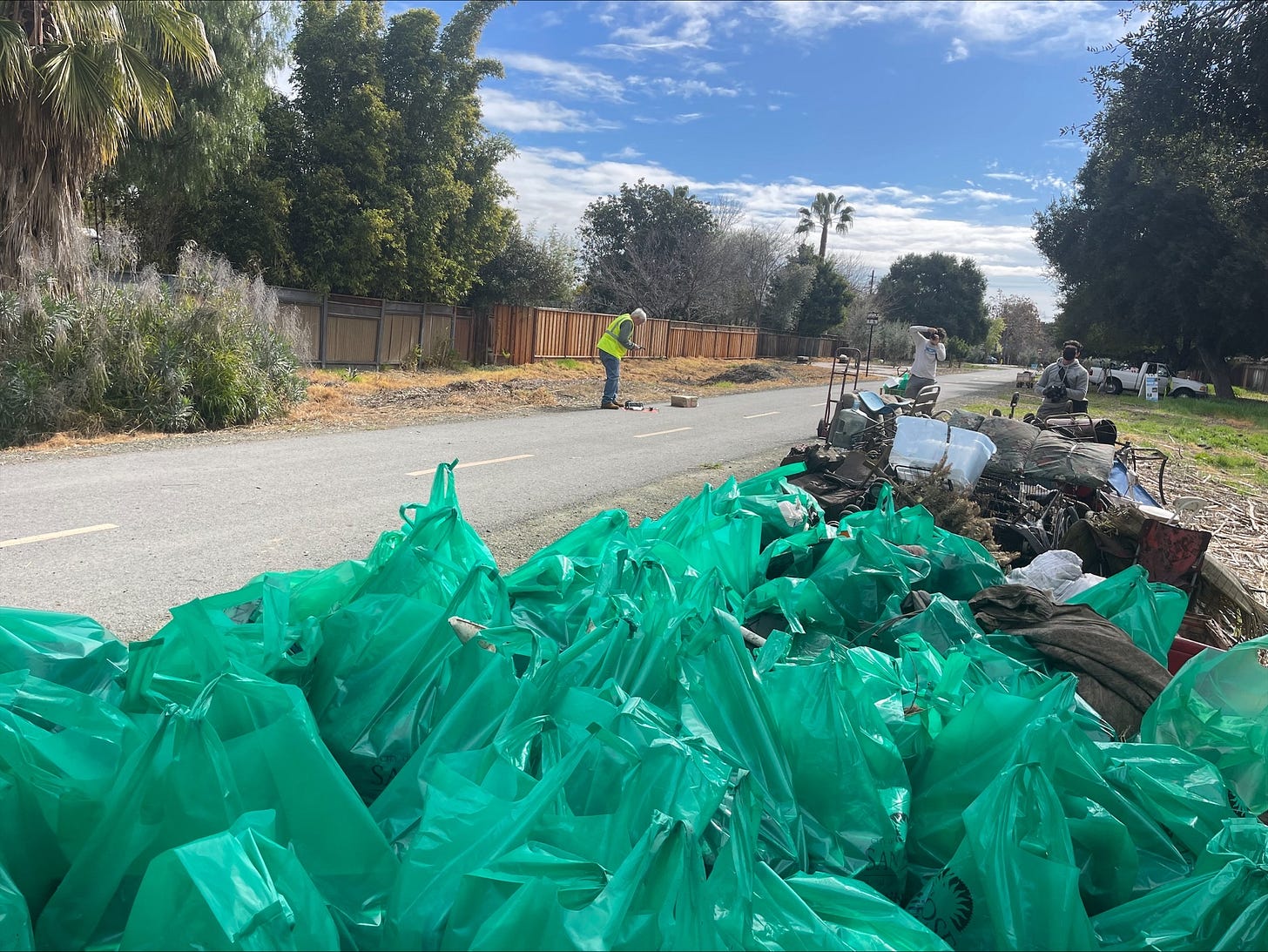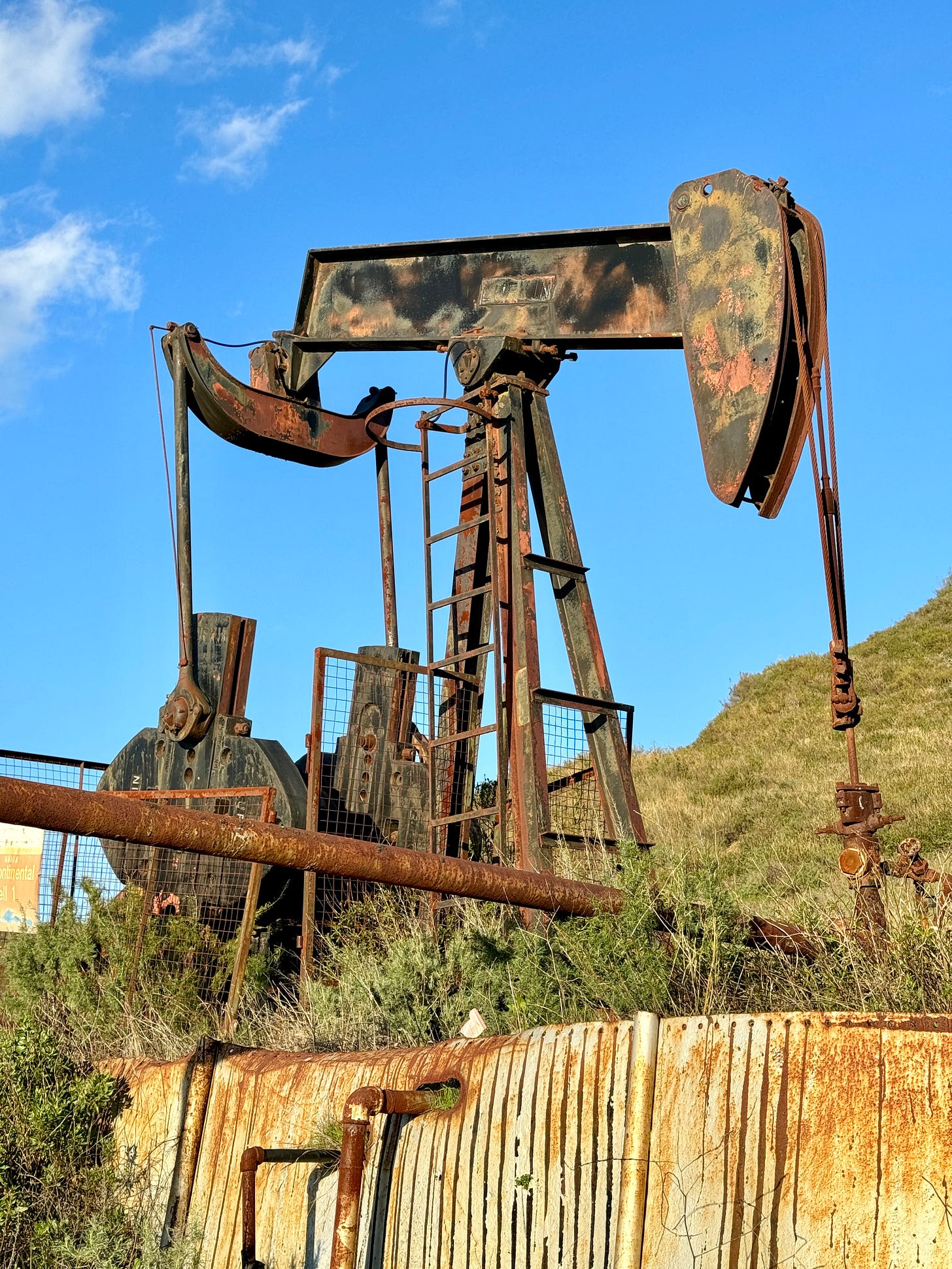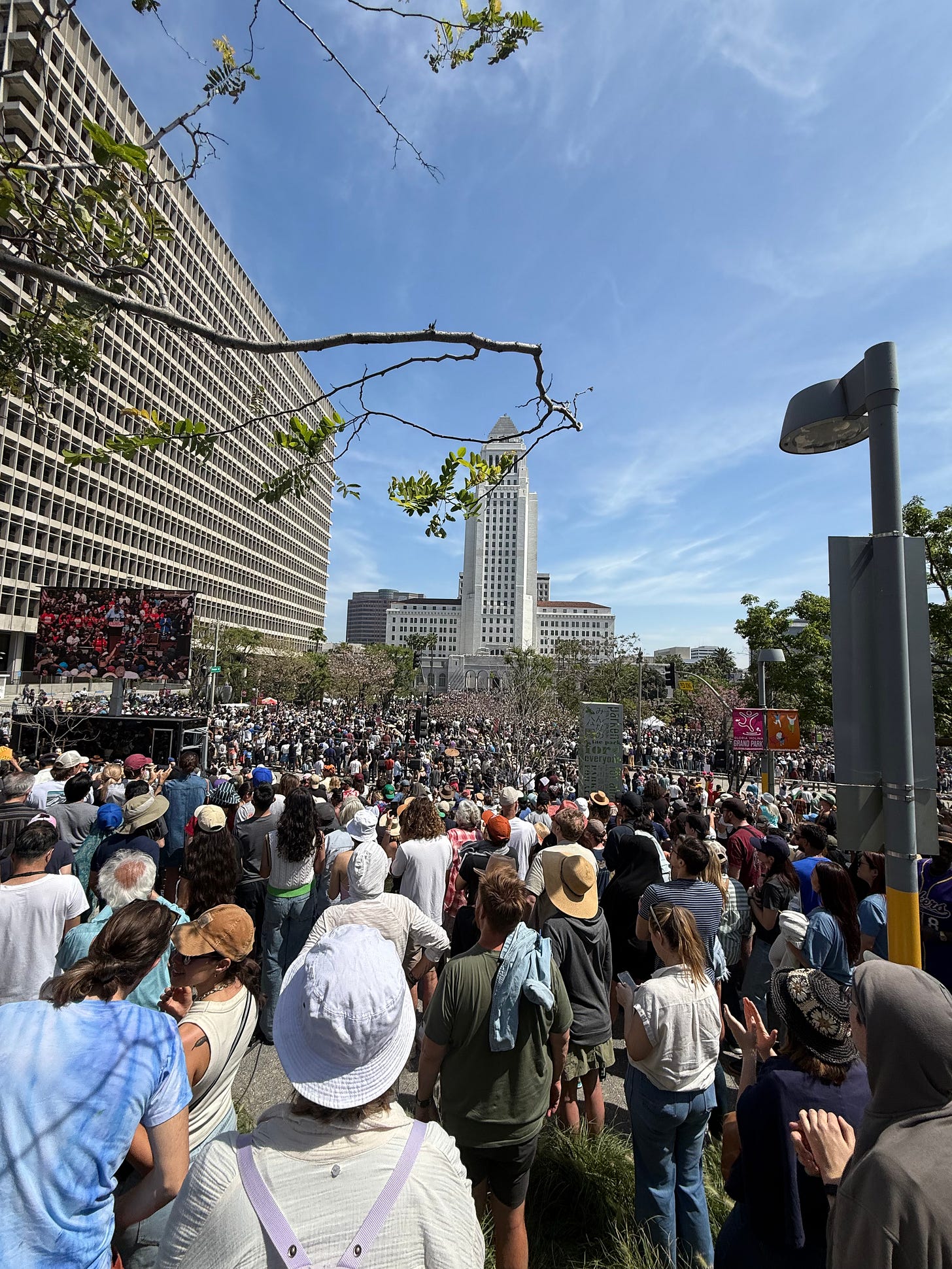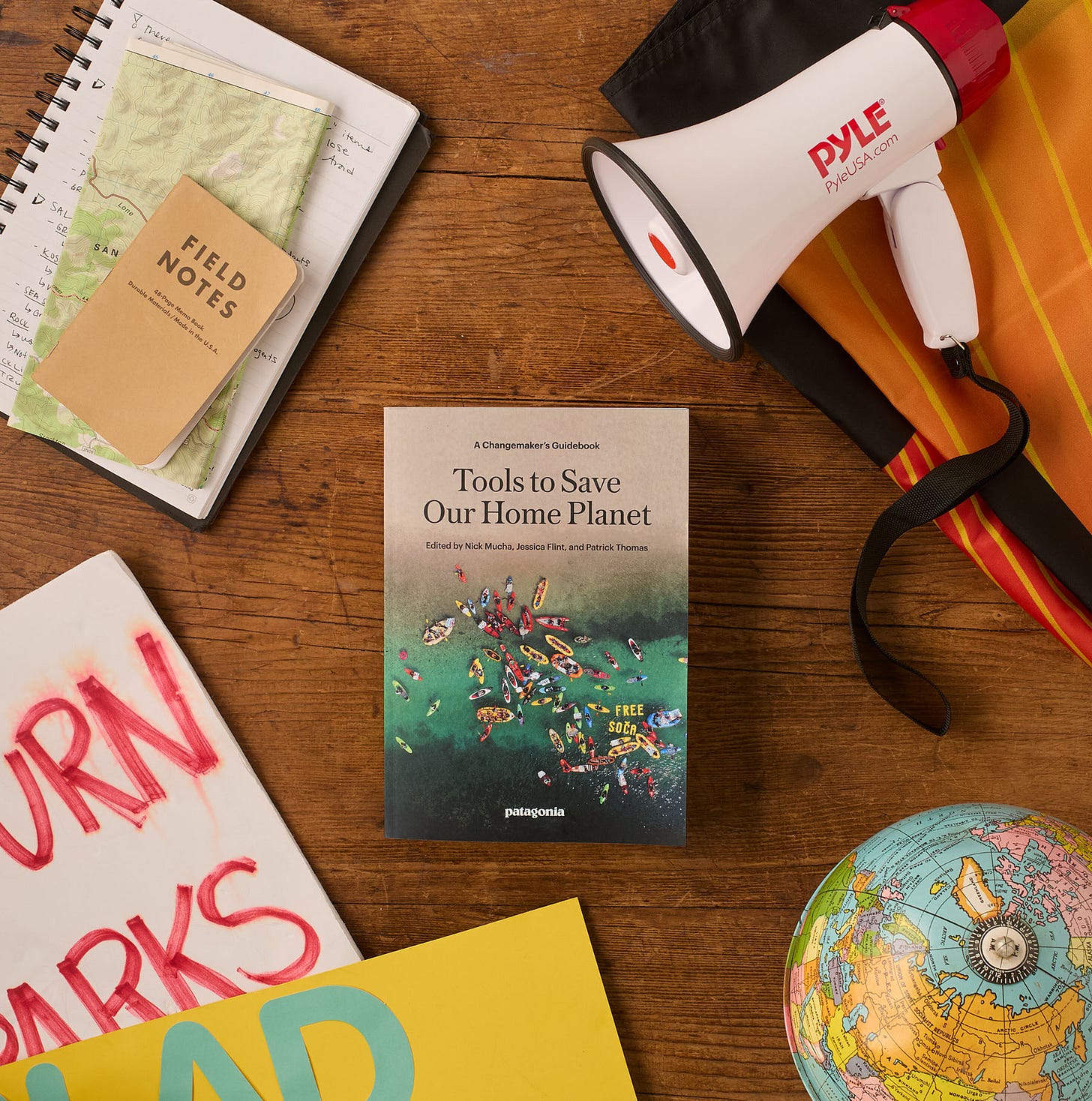Let No Good Deed Go Unpunished
In its rush to cut "waste," Trump's EPA threatens scores of common sense community-improvement efforts
A quick scroll below will get you to an Earth-inspired quartet of To-Dos for opposing the environmental harm that’s either proposed or underway due to the Trump administration. Take you 15 minutes, tops. If you have a few minutes more, stick around for what is essentially part two of “The EPA Actually Made America Great Again.” Keep resisting, friends! The President’s way out over his skis and careening into the trees…
The Bay, seen here from above San Jose, is where I feel most at home, and so I’ll be calling Congress again this week urging whoever will listen to oppose the gutting of the EPA. Federal grants have been essential to nonprofits in the region who work to restore its ecology.
If you don’t already know folks who’ve been laid off by the Trumpers, denied funds for their community improvement projects, or who are back to work for now, but only thanks to a judge who found their firing illegal, count yourself lucky. Beginning in mid-February, I started having weekly conversations that began with cafe intros such as, “And this is my partner…she’s considering a career change.” Oh, what from? Preventing early childhood diseases. My boss is the only one left after Elon Musk fed USAID into the wood-chipper...
Some of these chats have been sanguine—“you know, I needed to shake it up. You can’t live like a grad student forever, right?” Others have been anguished. “We were looking at ways to delay the on-set of dementia, like Alzheimer's, and we’ve just been told to stop it all. It sucks for everyone involved.” Mostly, because of my connections to environmentalists, a moment arises like this: “If you want to know how the government cuts are playing out on the ground, you should really talk to Steve.” And so, sooner or later, I call Steve.
Let it be known that I have no doubt whatsoever that government grants have gone to some dumb ideas or outright grifts. Frequently it’s the too-good-to-be-true notions that turn out to be magical thinking—or a racket. At Bloomberg Businessweek, we had happy hunting exposing some of these. Ethanol provided a target-rich environment for EPA hustlers, e.g. “The Fake Factory That Pumped Out Real Money: Making High Quality Biodiesel Is Hard. Getting Paid $100 Million Not to Make It Was a Snap.”
As an EV owner, too, it’s a sore point that the billions allocated for EV charging stations in President Biden’s Infrastructure Investment and Jobs Act have thus far yielded only a couple hundred new active stations—and all in states I am unlikely to visit in my EV. (The election cycle talking point that $7.5 billion had been spent for only eight chargers is total b.s., but the disappointment is real). All the same, I have yet to meet any grassroots orgs who are wasting taxpayer monies via the EPA—which is kind of too bad, really, because I still love a scoop! What I’ve noticed instead is that a lot of the work being done by the Gub’mint that’s characterized as a bunch of bureaucrats all doing the same work and billing OT, is actually being done by scrappy citizen-activists with modest EPA grants.
Steve turned out to be Steve Holmes. After a career in sales, he founded the South Bay Clean Creeks Coalition in 2013 to clean up the Los Gatos Creek, near San Jose. Steve did some fund raising of his own (and still does) and wrote grant proposals to programs administered by the EPA. SBCCC now looks after creeks all over the Silicon Valley.
“Before SBCCCs launched, our waterways were filled with mountains of trash containing an array of waste, such as mixed plastics, packaging and wrappers, batteries, shopping carts, paint cans, household goods, and more,” the org’s website notes. “During storm seasons, the accumulated trash along our rivers and creeks were swept downstream and deposited into pools, or worse, into the Bay.”
The haul from a clean-up of Los Gatos Creek earlier this year. The South Bay Clean Creeks Coalition is a force multiplier: with EPA grant dollars for vehicle rentals and supplies and whatnot, SBCCC is able to mobilize dozens of volunteers to clean waterways in and around Silicon Valley. Photos: courtesy of Steve Holmes.
Steve’s coalition has next-to-no overhead. As founder and director, he works out of a home office and makes use a nonprofit co-work place for larger meetings. “When we began, it’s something I did on the side. In recent years, I’ve been able to give it my full-time,” he says. “We’ve seen such great progress. Chinook ‘king’ salmon are returning to our creeks. And we’ve been working with the unhoused community who you’ll find camped in these areas so they can look after the creeks better, too.”
Nonprofit orgs like Steve don’t receive a lump sum from the Feds. They get their EPA funding via local government agencies. It’s more akin to a debit, or expense account, that he and his crew can use to get reimbursed for legit expenses. EPA grants account for about one half of Steve’s annual budget. Having those cut off will be immensely challenging. Meanwhile, the uncertainty is stressful.
Not long after calling Steve, I had a friendly chat with another do-gooder left to wonder when the ax might fall: Keely Luna. Keely’s a garden designer (and, delightfully, a circus aerialist). In March she received news that the program she worked for in Los Angeles — a part of the El Monte, Calif.-based nonprofit Active SGV — was losing its EPA grant. Then, two weeks later, it turned out the funds were there again. “It just makes it really hard to plan and to be responsible for making it to work on your days,” she noted.
Active SGV grew from a Facebook page years ago dedicated to developing a bike path in the San Gabriel Valley. It now encompasses a variety of projects that Trumpers like Robert Kennedy Jr. ought to applaud: bike repair, e-bike sharing, family fellowships and outdoor summer games—more green areas in the city all intended to keep people moving and healthy.
As for Keely, she helps create rain gardens in lower income neighborhoods so that when it rains, the water goes to ground and nourishes vegetation nearer to where it falls rather than running out to sea. Done well, these efforts make so much good sense: retaining water helps build drought tolerance and reduce risk of wildfires. Add native plants and you attract bees and other pollinators while trees bring shade and cooler temps to well-paved urban “heat islands,” reducing risk of heat stroke and other health concerns. And some of these gardens adjoin others for recreation, too, improving the quality of life for residents. Call me crazy, but that sounds like an efficient use of taxpayer dollars—the proverbial ounce of prevention that can help avert millions, even billions, in damages.
Sadly, though, something I admire about both Steve and Keely’s work—that it is both good for Nature and good for poor folks—might prove a liability. As the Washington Post and others have reported, the EPA is cancelling the 780 grants issued in the cause of environmental justice—that is, prioritizing programs that address how, say, a poor Black neighborhood endures more pollution from a nearby incinerator than wealthier ones do.
From the Post: “The canceled grants would have funded a range of projects aimed at helping communities cope with the worsening effects of climate change. Recipients planned to use the money to seal homes in Washington state against wildfire smoke and protect Alaska Native villages from coastal flooding, among other things.”
Even those who have a more market-based approach to enviro protection find the EPA rollbacks and cuts baffling—especially the attempts to kill the Obama-era “methane rules.”
Those who’ve been with me from the beginning with My Polar Disorder may recall that I purchase carbon offsets from a former oil services exec (and ski coach): Curtis Shuck Jr. Yes, yes, I know: carbon offsets are sus, “like paying someone else to diet for you.” That’s why I was glad to find Curtis. His aren’t.
President Trump and EPA administrator Lee Zeldin have called climate change a “hoax” and a “religion,” respectively, and are defunding as many climate initiatives as they can identify. Their denial, however, won’t change the physics. We must reduce the levels of greenhouse gases in our atmosphere or will continue to suffer the consequences of an over-heated Earth. (Say what you will about Trump and Zeldin’s intelligence, but even they get this. It’s just that they are rewarded for lying about it.)
Carbon offsets are one tool for cooling Earth down. If unfamiliar, they are credits you or your company can buy to counter the heat-trapping pollution you create. Often these credits pay for planting trees or to leave forest intact. While nice, these measures don’t do enough to counteract our collective emissions. By sealing inactive oil wells that are leaking methane, Shuck’s able to demonstrate the exact volume of emissions ceased for each credit purchased.
Since January 2022, when I last spoke to Curtis, his Well Done Foundation has plugged 40 wells. “Currently we are plugging well 47!” he emailed. Reminded of my CoVid-era daydream of plugging drill sites along California Route 33, he replied, “As for Ventura, we are absolutely interested in expanding our efforts into that County as well.”
Curtis hasn’t made it to Ventura County yet, but he and Well Done Foundation plan to seal the methane leaks at this drilling wreck near Santa Barbara this coming fall. Photo: courtesy of Well Done Foundation.
In 2018, the EPA counted 3.2 million inactive wells throughout the U.S., of which two million were found to be improperly plugged or not plugged at all. Seepage from oil and gas wells is the largest source of atmospheric methane in the U.S., well-ahead of cow patties, belches, farts and various other hard-to-measure sources of this “natural gas.” And methane is a far more potent greenhouse gas than the carbon dioxide pouring from our tailpipes; for the first 10 years in the heavens it traps 80 times as much solar radiation as CO2.
For his part, Shuck is not interested in debating the wisdom of fossil fuels for energy generation; if the industry simply cleaned up after itself and plugged more of those inactive wells, he says, we’d be well on our way to a safer future without even having to cut current production. He does not rely on EPA funds to continue his work, but the change in rules could demotivate companies from using his services or buying his credits.
“Drill, baby, drill? Ok, sure. Fine,” Shuck said. “But also, Plug, Baby, Plug! We can have a strong economy and clean up after.”
4 To-Dos You Can Do in 15 Minutes on Monday
Call your Reps and Senators and oppose the gutting of the EPA (again). Here’s a quick way to find your Congresspeople.
Say No to Deep Sea Mining.
On Instagram, go to @deep_sea_conserve and @theoceanandus_official and @deepstewardship and arm yourself with facts. Then call your Senators and Reps back to oppose Trump’s executive order calling for deep seabed mineral mining. Susan Casey, the author of Underworld, a terrific book on the ocean depths, writes of Trump’s EO: “If it sounds insane to set out to wreck the ocean systems that buffer climate change and hold the planet in a steady state so that we can, you know, live here—that’s because it actually IS insane.”
The National Park Service continues to face cuts to staff and programs that will not only make the parks more dangerous to visit, but do real harm to the surrounding communities who rely on them — to say nothing of the nonhuman inhabitants of those areas. Go here for a letter/ script from the Resistance Rangers. Write to Secretary_of_the_Interior@ios.doi.gov and Interior_Press@ios.doi.gov OR call at 202-208-3100 x3.
Wait, we’re not done with Sec. Doug Burgum. Use this link to sign a petition against the expansion of oil and gas drilling and mining within our National Monuments.
And if you’re in Silicon Valley or the San Gabriel Valley, consider a volunteering or donating to the South Bay Clean Creeks Coalition or Active SGV. Want to offset your carbon emissions or simply donate to plugging methane leaks and slowing climate change, go to the Well Done Foundation.
P.S. Didn’t make it to the “Fighting the Oligarchy” stop for Bernie and AOC in L.A., but my colleague Charlotte did and gave it a five-star Yelp! review… She reported a massive crowd (reportedly 36,000) that struck her as resolute as they were peaceful. She returned heartened that plenty of our fellow citizens are not OK with the government disappearing people to foreign prisons or an agenda set by the merciless ideologues behind Project 2025.
P.S.S. Rarely do we get to be as timely at Patagonia Books as we did Tuesday, April 23, Earth Day, with the publication of Tools to Save Our Home Planet. Check it out.








